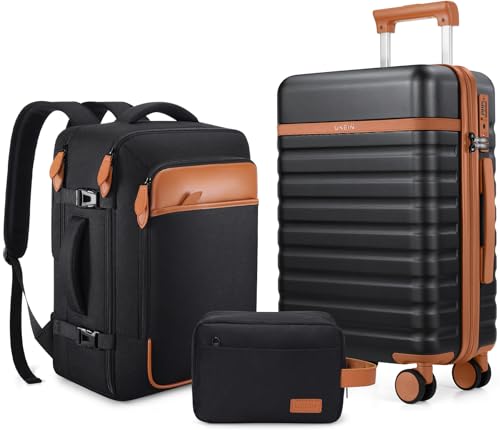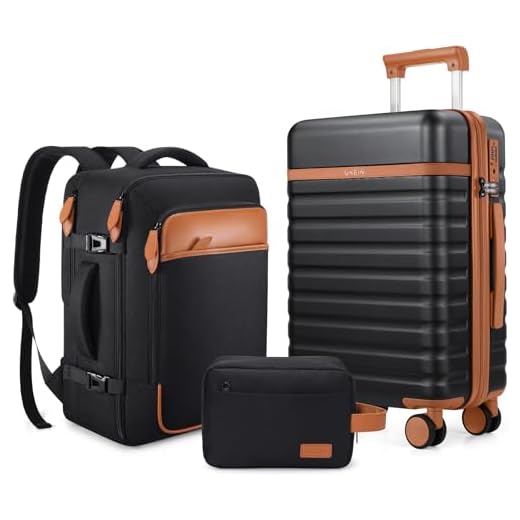

Place the largest case at the bottom. This creates a sturdy foundation and helps stabilize the structure. Ensure that the weight is evenly distributed to avoid tipping over.
Utilize the interior space effectively by filling it with smaller items. This maximizes every inch and maintains balance. Consider using packing cubes or compression bags to keep the contents organized and compact.
For extra durability, secure the top case with straps or use a sturdy handle to carry both at once. Reinforce the arrangement by aligning the handles of each suitcase, allowing for easier maneuverability.
Before closing, double-check for any protruding items that may disrupt the sealed structure of your travel gear. A smooth closure is essential for protecting your belongings during transit.
Effective Techniques for Organizing Rigid Travel Gear
Position larger cases on the bottom for stability, ensuring they can support the weight of smaller units on top. Use cases with handles or wheels at opposing ends for easy lifting and maneuvering. Create a secure horizontal line by placing the heaviest items closer to the center.
Utilize packing cubes or compression bags inside to maximize space and maintain organization. When layering, ensure that the bases are flat to minimize the risk of tipping. Stack cases according to size, with mid-sized ones securely resting between the larger and smaller variants.
Engage built-in locks or interlocking features to prevent slipping during transport. When feasible, align luggage in a way that minimizes movement, placing more rigid designs against softer items for additional cushioning. Consider using a strap to bind the stacked cases for enhanced stability.
Choosing the Right Luggage for Stacking
Select units that feature a rectangular shape for optimal stability when arranging multiple suitcases. Models with reinforced corners enhance durability and prevent damage during travel.
Prioritize lightweight materials like polycarbonate or ABS which reduce overall weight while maintaining structural integrity. These choices minimize strain on your back and enhance mobility.
Ensure each piece has interlocking mechanisms or smooth surfaces, allowing for safe and secure alignment. A well-designed set with easy-to-use zippers and handles streamlines handling and organization.
Size and Arrangement
Active travelers should match piece sizes for efficient layering; larger units should be at the bottom, supporting smaller variants above. This approach prevents lateral movement and keeps contents safe.
Additional Features
Look for integrated compression systems within each container that optimize internal space. Compartments for shoes or delicate items further enhance versatility, aiding organization during trips.
Lastly, consider related home appliances as well, such as best heat pump tumble dryers, which promote a practical and organized lifestyle, helping maximize efficiency both at home and on the go.
Understanding Weight Distribution in Stacked Travel Cases
Prioritize placing heavier items at the bottom. This foundation provides stability and balance, preventing toppling during transit. Distribute weight evenly across all surfaces.
Consider the shape and dimensions of the cases. Larger, bulkier pieces should be positioned lower, while smaller, lighter containers can sit on top. This arrangement minimizes strain on the structure and reduces risk of damage.
- Use soft materials, such as clothes or accessories, to fill gaps between rigid items. This enhances weight distribution and reduces potential movement.
- Avoid overloading any single piece to maintain manageable handling capabilities.
Assess the weight limits imposed by airline regulations or transportation services. Ensure compliance to avoid additional fees or logistical challenges.
- Weigh the bottom item first to establish a baseline.
- Add subsequent pieces gradually, ensuring balance and support.
- Test stability before finalizing your arrangement.
Adjustments may be necessary based on travel conditions such as surface type or method. Stay adaptable to ensure a secure and trouble-free experience.
Organizing Items for Better Stability
Begin with heavier items at the bottom. Place dense products, such as shoes or books, beneath lighter ones to create a solid base.
Utilize packing cubes or compression bags to group items. This helps maintain organization and ensures items don’t shift during transport.
Arrange items in a way that maximizes space. Roll clothing to fit snugly or use vertical storage methods for optimal use of the interior area.
Employ small, soft items like socks or belts to fill gaps. This prevents movement and contributes to an evenly distributed load.
Consider the dimensions of each article. Larger items should be positioned strategically alongside smaller ones to maintain balance.
Always secure loose items. Use straps or compression systems contained within your bag to minimize movement and maintain form.
Finally, regularly reassess your arrangement. Before each trip, review how items are placed to ensure optimal stability and easy access during your travels.
Using Straps or Tie-Downs for Security
Choose adjustable straps specifically designed for securing travel cases. These can be easily tightened around your gear, preventing shifts during transportation. Look for heavy-duty materials that offer durability and resilience against wear.
For added stability, opt for straps with non-slip features, which help keep the items securely in place. Consider employing cam buckle straps, which provide a strong grip without the risk of slipping.
When securing multiple containers, run a single strap through all pieces, anchoring them together. This approach minimizes movement and enhances overall safety. For vertical arrangements, use tie-downs that loop around the top item and anchor to a sturdy base.
Adjust tension carefully; too tight can damage the case, while too loose may not provide adequate security. Regularly check the integrity of the straps during travel to ensure continued support and stability.
Lastly, consider brightly colored straps for visibility, making it easier to identify your secured items in crowded areas. This small addition can significantly enhance both security and convenience during your travels.
Avoiding Damage During Transit
Prioritize the placement of fragile items in the center of your case. This positioning minimizes the risk of impact from external forces during travel. Utilize padded sleeves or cases for sensitive objects, such as electronics or glassware, to absorb shocks.
Incorporate bubble wrap or packing paper between your belongings. This additional cushioning lessens the possibility of scuffs or breakage. Avoid overpacking; maintain some space to prevent items from shifting and colliding with each other, especially during transportation.
Choosing the Right Location
Position your container in an upright manner whenever possible. Top-loading styles can provide additional protection against compression. Keep it secured in vehicles with reflective straps to limit movement. Storing the bag under a seat rather than in an overhead compartment can also reduce exposure to rough handling.
Monitoring Your Cargo
When traveling by air, consider a protective cover for your case. This guarding layer can prevent scratches and dents while it passes through the baggage handling system. Take note of your provider’s guidelines on weight and dimensions to avoid mishandling caused by excessive loads.
Storage Solutions for Convenient Stacking
Select storage options that maximize space and reduce clutter. Invest in shelving units or containers specifically designed to fit your suitcases. These systems should accommodate various sizes while providing easy access to all items.
Implement vertical storage by utilizing wall-mounted shelves or hooks. This method enhances organization and frees up floor space, allowing for better arrangement of your bags. Consider stackable bins as well; they’re perfect for smaller items and can be easily placed atop larger cases.
Keep seasonal or infrequently used items in dedicated compartments. Label every container to identify contents clearly, which aids in quick retrieval. Regularly assess and rearrange your setups to suit your changing travel patterns.
For added convenience, portable solutions like the best collapsible duffel bag for travel are ideal. They can be easily folded and stored without taking up much space, ensuring you’re always prepared for unexpected trips.
| Storage Solution | Benefits |
|---|---|
| Shelving Units | Efficient use of vertical space |
| Stackable Bins | Customizable storage for smaller items |
| Wall-Mounted Hooks | Easy access and organization |
| Portable Folding Bags | Space-saving and versatile |
Periodically reevaluate your storage methods to ensure they continue to meet your needs. Being proactive about organization pays off during travel, making the experience more streamlined and enjoyable.








